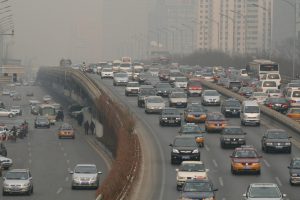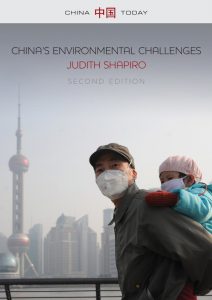The number of deaths caused by lung cancer in Hebei, a heavily-industrialised province just south of Beijing, has risen threefold in the last 40 years, according to a report released in recent weeks by the Hebei Cancer Institute.
Big increases in the number of lung cancer-related deaths have been recorded across China. An estimated 7,500 people a day died from cancer in 2015, reported the medical paper, CA: A Cancer Journal for Clinicians. Cancer is now the country’s biggest killer.
“Lung cancer mortality has risen 221% nationwide over the last 40 years, with incidence rates growing by roughly the same amount. So a 306% increase in Hebei isn’t too surprising,” said Chen Wanqing, deputy head of the China Cancer Reporting Centre.
Since the publication of the report in January, the link between lung cancer and air pollution has become the subject of national debate, although tobacco use in China is still most likely to be the cause deaths related to lung cancer in China.
In Hebei, 35.22 people in every 100,000 die from lung cancer annually, according to local government statistics. While nationally, it is 40.98 among every 100,000 who live in cities, and 38.78 in rural areas, according to the 2013 edition of the China Health Statistics Yearbook.
So while air pollution in Hebei is considerably worse than most provinces, its lung cancer rates are in tune with the national average. This suggests that air pollution is not the primary cause of the spike.
In 2015, Peking University and Greenpeace issued a joint report saying that prolonged exposure to PM2.5 pollution can cause ischemic heart disease, cerebrovascular disease, lung cancer and chronic obstructive pulmonary disease. These diseases combined accounted for over 257,000 deaths in China in 2013.
But it was two years before the Greenpeace study that the World Health Organisation’s (WHO) International Agency for Research on Cancer published a report that established a strong link between lung cancer and outdoor air pollution.
Based on almost 1,000 studies from five continents, the IRAC concluded that the particulate matter in air pollution is carcinogenic.
In Hebei, which languishes at the bottom of China’s air quality index tables, scientists say more studies into the health impacts of air pollution are needed.
Professor Pan Xiaochuan of Peking University’s School of Public Health told chinadialogue it is too early to be certain that rising cancer rates are a consequence of air pollution, but that foul air is likely to reflected in cancer rates in the years to come.
“There may be a link, but there first needs to be more epidemiological evidence before you can be sure,” Pan said.
He added: “But you can expect that the serious air pollution in Hebei over the last 20 years will probably result in an increased incidence of lung cancer in the next 5-10 years,” he added.
While deadly air pollution is an important contributing factor, it is not the leading cause of lung cancer worldwide.
Urban cancer rates
Smoking is the number one cause of lung cancer on a global basis, followed by exposure to radon—an odourless and tasteless radioactive gas emitted from rocks and contaminated soil. So exposure to air pollution may only rank third as a cause of lung cancer.
Globally, other contributory factors are cited, such as indoor air pollution caused by heating and cooking that uses coal and other biomass fuels; and waterborne carcinogens, a growing source of exposure.
In China, lung cancer affects men and those living in urban areas disproportionately. The gender imbalance is reflective of the high number of men who smoke in China – around 68% – said experts. However, the spike in urban areas is attributed to air pollution.
A Beijing doctor, who asked not to be named, told chinadialogue that he has seen a big increase in the number of patients with respiratory problems over the last two years. He put this down to smoking, indoor and outdoor air pollution and genetics.
Ageing population
In 2010, Chen’s research team reported that rising cancer rates are an impact of China’s rapidly ageing population.
Meanwhile, according to the Beijing doctor, if deaths accounted for by this factor are removed from the data, then lung cancer mortality actually fell by 0.55% between 1988 and 2005.
In China, cancer is seen as a disease of older generations. In 2013, there were only 9.29 deaths from lung cancer per 100,000 people aged 40 to 45. But among people aged 70 to 75 there were 264.10 deaths; and among those over 85 there were 491.17, according to the most up-to-date figures from the China Health Statistics Yearbook.
Chen said that in the early 1970s, healthcare in China was poor and the average life expectancy of the population much lower. Many cancer cases went unrecognised or unreported; and particularly in rural areas, people didn’t even seek treatment.
Tobacco
The causal link between smoking and cancer has been known in China since the 1950s.
In China, tobacco smoking accounts for about one-quarter of all cancer deaths, with the country home to 300 million smokers, according to WHO data from 2010.
That is almost one third of the world’s total, and smoking rates in adolescents and young adults are still rising.
Whatever the cause, carcinogens can take years to show their effect on the body, which means any measures to combat it now will not show results until long into the future.








